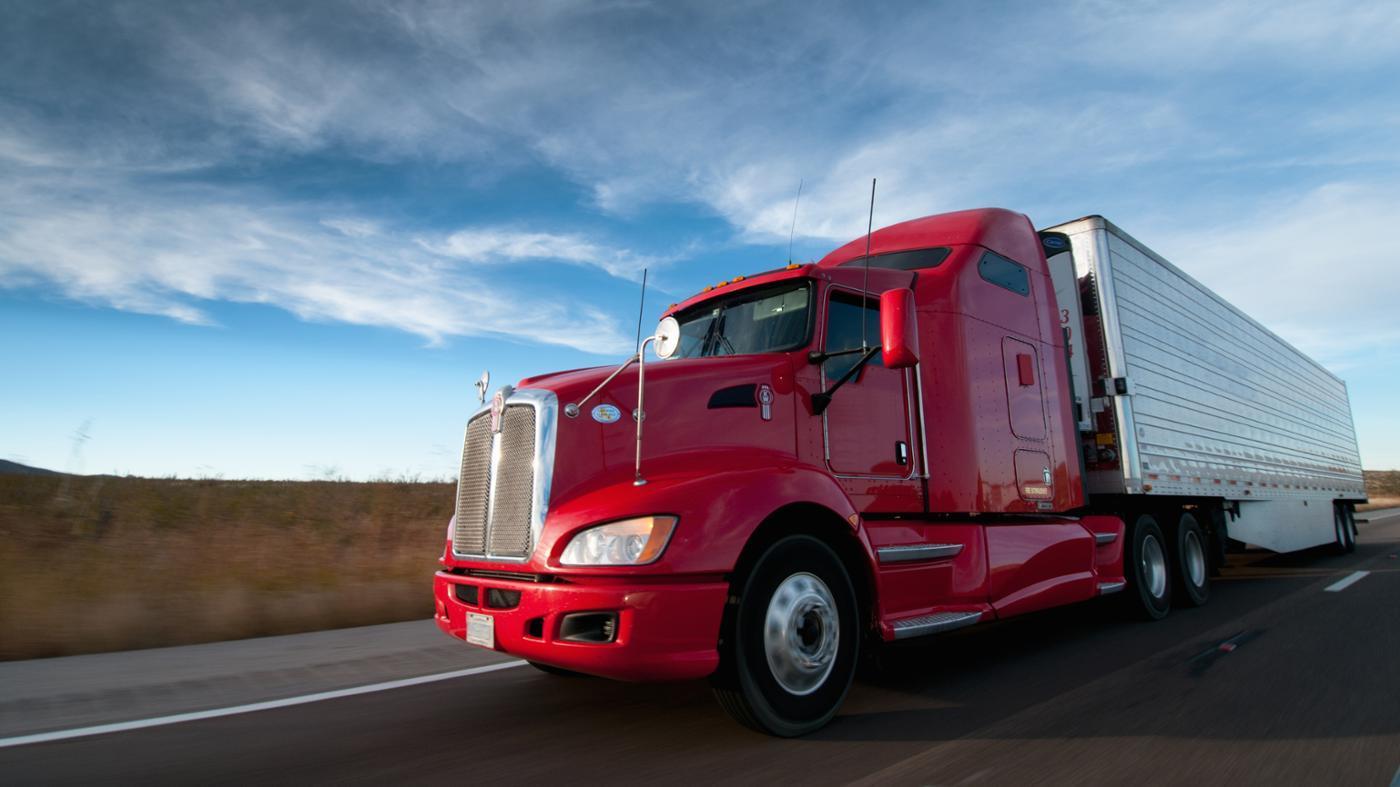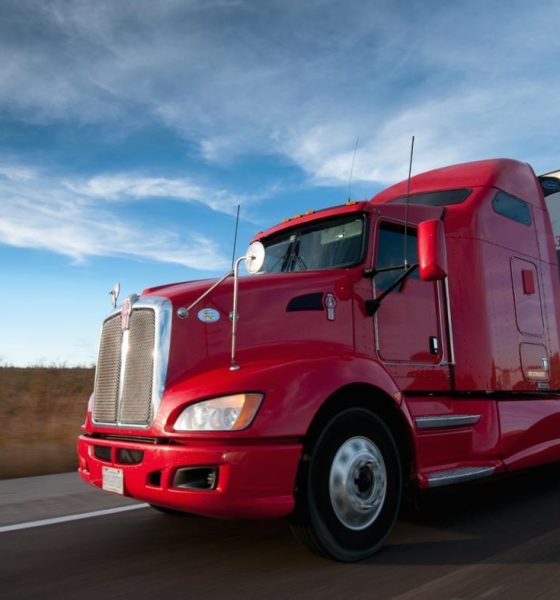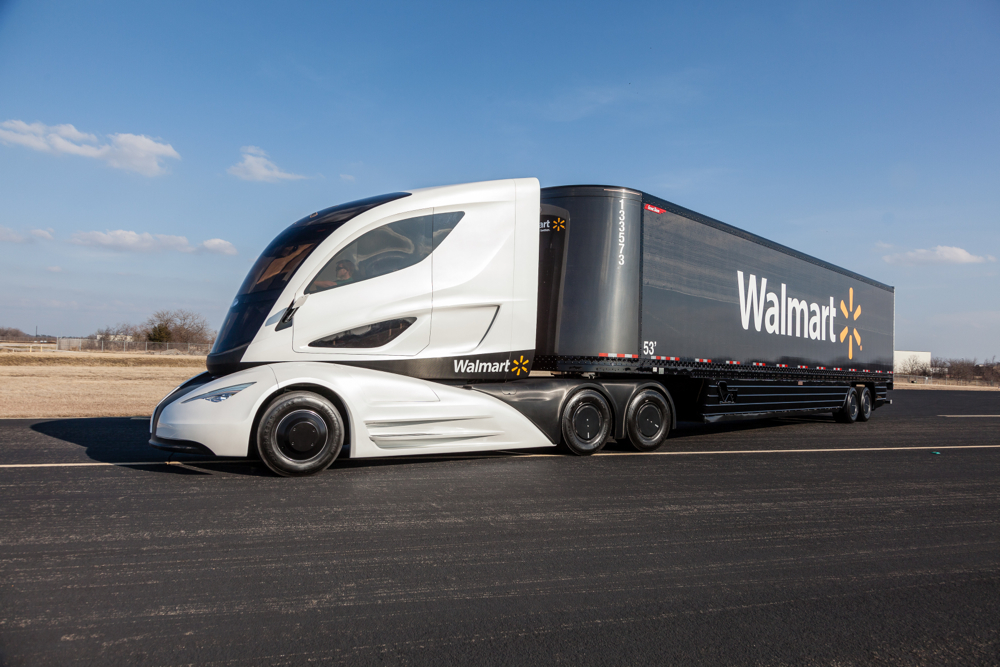

News
Solving the Tesla Semi truck conundrum: here’s what it might take
With the release of Tesla’s updated vision for the future, CEO Elon Musk included plenty of information that was both intriguing and light on details. From that, we will try to make a guess as to what Tesla’s plans are in reference to trucks and shed light on the many obstacles that the company will need to overcome before making its plans a reality.
The light details of Musk’s announcement is par for the course from Tesla and Co, which operates its marketing as much on hype and viral sharing as anything else. This is not a knock against the company, as most other firms would sacrifice virgins every Friday to see the same kind of unsolicited viral marketing that Tesla generates. One thing Elon has mastered is walking the fine line between being informative and forthcoming and being vague enough to cause rampant speculation.
In the company’s “Part Deux” plans for the future, a brief and almost passing mention of semi-trucks was made as a part of Tesla’s developments. Specifically, Must referred to “heavy-duty trucks” and called the idea a “Tesla Semi.” This can imply two things, but probably implies both. It could imply that Tesla plans to make a heavy-duty truck – which could mean a three-quarter ton pickup truck, a Class B heavy truck, or a large Class A freight-hauling truck. Or it can imply that Tesla plans to make a semi-truck only (aka “18 wheeler”). We believe it’s likely that they plan to do all of the above.
Currently, about 70 percent of the freight being moved around the United States is moved on semi-trucks in which a large tractor is attached to a separate trailer. These trucks typically operate at weights up to 80,000 pounds in vehicle, freight, and fuel. They are referred to as “Class A” trucks because the weight class requires an operator’s license of that type. Yet that is only one class of truck. And the typical over-the-road (OTR) truck we usually think of when talking about semi-trucks are just one slice of a large trucking pie.
Nearly 12,000 million tons of freight are hauled by trucks every year in the United States. A significant portion of that hauling is done by smaller trucks rather than large semi-trucks. Package carrying (van) trucks, dump trucks, refuse (garbage) trucks, and other specialized trucks are also common and actually make up a larger portion of the miles driven by heavy-duty trucking. Most of these vehicles have a gross weight of 26,000 pounds or more, by definition, so for our purposes here we will be excluding passenger-style heavy-duty pickups and the like. We are assuming that Musk is referring to freight hauling, given his statements.
With the plan to “cover the major forms of terrestrial transport” that Tesla put forth, we can assume that the company plans to design and potentially build heavy-duty trucks of all stripes. This is realistic given that major truck builders such as Paccar (Kenworth, Peterbilt), Volvo, Mack, etc. already do this. One basic design can be modified to match several needs, thus a single model Mack truck can be both an OTR freight puller and a dump truck with just a few changes to the drivetrain and chassis. Medium-duty trucks, such as package delivery (ala UPS, FedEx) box trucks can also be of a single design with multiple body options. Although the reality is a bit more complicated than this, the gist is that it is possible to design only a couple of vehicles and have them workable in most major truck markets. Knowing this, we will concentrate on the most difficult to achieve, over-the-road heavy-duty semi-trucks.
Knowing that, there are obstacles to overcome. The challenges of a Tesla pickup truck are a beginning, but with a heavy freight hauler, they become exponential. Here are some basic requirements for the biggest of these HD trucks:
- Power output similar to a large diesel engine, equalling roughly 450-550 horsepower and 800-1,200 pound-feet of torque. The amount of output depends heavily on the work to be done. A typical OTR truck, for example, falls in the lower end of this spectrum to maximize fuel efficiency while a typical off-road construction or heavy-load truck (logging and the like) will be at the higher end.
- An operating range of 600 miles per charge for OTR and about half that for more local use (construction, large trailer/freight delivery). Smaller trucks doing package deliveries could operate in the 150-mile range easily.
- The capability to haul as much or more freight than the current diesel-powered offerings do.
That last point is important. Getting a 600-mile range for a truck that can weigh up to 80,000 pounds, freight included, is pretty simple. Getting a 600-mile range for a truck and trailer weighing under 35,000 pounds is not as easy. It’s the old problem of more batteries equals more range, but also equals more weight.
There have been and are current attempts at electrifying semi-trucks, of course. Mostly in the medium-duty package delivery and trailer moving (non-transport) sectors. Solutions involving hydrogen fuel cells, battery-electrics, hydraulic hybrids, and more have been produced. Some did not do well (see Smith Transport) and some are going places (see Parker-Hannifin’s hydraulic hybrids). For the most part, battery-electric over-the-road trucks are seen as a pipe dream by most in the industry. There are good reasons for this. Not the least of which are the battery weight and range expectations of the trucks. Nevermind the likely long charging times required.
Without getting too detailed, most OTR drivers expect to put in 600 or more miles per day in a solo run (one driver) and about 1,000 or so when team driving. Most fuel stops are 15-20 minutes and most trucks have a range of 700-1,000 miles when fitted with dual tanks (one on either side). Having enough lithium-ion batteries on board to do that is daunting. Especially given the high power outputs required to move 80,000 pounds worth of rig and freight.
There are solutions for this, of course. Since Musk devoted so much of his announcement to autonomous driving, we can assume the plan is to include that with trucking. Three possible ideas are:
Relaying. A truck takes a trailer 300-400 miles, swaps it with a trailer going back where it came from, and returns. The trailer swapped continues on with on another truck for another 300-400 miles, then another, and another.. Until its final destination and delivery. This is currently done with certain types of freight and these trucks often have shorter trailers and run them as doubles (one attached to another). Automating this might be a solution. At least for some types of freight.
Battery swapping. The truck drives for a certain range of miles, stops somewhere to have its emptied battery swapped with a full one, and continues. If done in 10-15 minutes and not more than twice a day, this would be realistic under the current trucking paradigm with a driver on board. When automated, the swaps could be as often as you’d like, though each stop means delays in shipment.
Partial electrification. This would be a truck which runs on electricity but has an on-board combustion generator. This is a potential solution, but is not likely to be on Tesla’s agenda.
Another option that should be considered, though it might not be what Tesla fans will want to hear: Musk may be planning on taking a standard semi-truck and automating it. In other words, the Tesla Semi could actually be an automation system, not an actual truck. At least in the beginning. Given the huge amount of technical obstacles, some of which may not be surmountable without combustion, this is a viable guess. At least for OTR trucks.
Any of these ideas or a combination are realistic for a Tesla Semi strategy in regards to OTR trucks. There are no shortage of plans (grandiose and otherwise) for transforming the trucking industry via electrification. Seeing Teslas will at least be interesting.

News
Elon Musk’s Grokipedia surges to 5.6M articles, almost 79% of English Wikipedia
The explosive growth marks a major milestone for the AI-powered online encyclopedia, which was launched by Elon Musk’s xAI just months ago.

Elon Musk’s Grokipedia has grown to an impressive 5,615,201 articles as of today, closing in on 79% of the English Wikipedia’s current total of 7,119,376 articles.
The explosive growth marks a major milestone for the AI-powered online encyclopedia, which was launched by Elon Musk’s xAI just months ago. Needless to say, it would only be a matter of time before Grokipedia exceeds English Wikipedia in sheer volume.
Grokipedia’s rapid growth
xAI’s vision for Grokipedia emphasizes neutrality, while Grok’s reasoning capabilities allow for fast drafting and fact-checking. When Elon Musk announced the initiative in late September 2025, he noted that Grokipedia would be an improvement to Wikipedia because it would be designed to avoid bias.
At the time, Musk noted that Grokipedia “is a necessary step towards the xAI goal of understanding the Universe.”
Grokipedia was launched in late October, and while xAI was careful to list it only as Version 0.1 at the time, the online encyclopedia immediately earned praise. Wikipedia co-founder Larry Sanger highlighted the project’s innovative approach, noting how it leverages AI to fill knowledge gaps and enable rapid updates. Netizens also observed how Grokipedia tends to present articles in a more objective manner compared to Wikipedia, which is edited by humans.
Elon Musk’s ambitious plans
With 5,615,201 total articles, Grokipedia has now grown to almost 79% of English Wikipedia’s article base. This is incredibly quick, though Grokipedia remains text-only for now. xAI, for its part, has now updated the online encyclopedia’s iteration to v0.2.
Elon Musk has shared bold ideas for Grokipedia, including sending a record of the entire knowledge base to space as part of xAI’s mission to preserve and expand human understanding. At some point, Musk stated that Grokipedia will be renamed to Encyclopedia Galactica, and it will be sent to the cosmos.
“When Grokipedia is good enough (long way to go), we will change the name to Encyclopedia Galactica. It will be an open source distillation of all knowledge, including audio, images and video. Join xAI to help build the sci-fi version of the Library of Alexandria!” Musk wrote, adding in a later post that “Copies will be etched in stone and sent to the Moon, Mars and beyond. This time, it will not be lost.”
News
Tesla Model 3 becomes Netherlands’ best-selling used EV in 2025
More than one in ten second-hand electric cars sold in the country last year was a Tesla Model 3.

The Tesla Model 3 became the most popular used electric car in the Netherlands in 2025, cementing its dominance well beyond the country’s new-car market.
After years at the top of Dutch EV sales charts, the Model 3 now leads the country’s second-hand EV market by a wide margin, as record used-car purchases pushed electric vehicles further into the mainstream.
Model 3 takes a commanding lead
The Netherlands recorded more than 2.1 million used car sales last year, the highest level on record. Of those, roughly 4.8%, or about 102,000 vehicles, were electric. Within that growing segment, the Tesla Model 3 stood far ahead of its competitors.
In 2025 alone, 11,338 used Model 3s changed hands, giving the car an 11.1% share of the country’s entire used EV market. That means more than one in ten second-hand electric cars sold in the country last year was a Tesla Model 3, Auto Week Netherlands reported. The scale of its lead is striking: the gap between the Model 3 and the second-place finisher, the Volkswagen ID3, is more than 6,700 vehicles.
Rivals trail as residual values shape rankings
The Volkswagen ID.3 ranked a distant second, with 4,595 used units sold and a 4.5% market share. Close behind was the Audi e-tron, which placed third with 4,236 registrations. As noted by Auto Week Netherlands, relatively low residual values likely boosted the e-tron’s appeal in the used market, despite its higher original price.
Other strong performers included the Kia Niro, the Tesla Model Y, and the Hyundai Kona, highlighting continued demand for compact and midsize electric vehicles with proven range and reliability. No other model, however, came close to matching the Model 3’s scale or market presence.
News
Tesla Model Y Standard Long Range RWD launches in Europe
The update was announced by Tesla Europe & Middle East in a post on its official social media account on X.

Tesla has expanded the Model Y lineup in Europe with the introduction of the Standard Long Range RWD variant, which offers an impressive 657 km of WLTP range.
The update was announced by Tesla Europe & Middle East in a post on its official social media account on X.
Model Y Standard Long Range RWD Details
Tesla Europe & Middle East highlighted some of the Model Y Standard Long Range RWD’s most notable specs, from its 657 km of WLTP range to its 2,118 liters of cargo volume. More importantly, Tesla also noted that the newly released variant only consumes 12.7 kWh per 100 km, making it the most efficient Model Y to date.
The Model Y Standard provides a lower entry point for consumers who wish to enter the Tesla ecosystem at the lowest possible price. While the Model 3 Standard is still more affordable, some consumers might prefer the Model Y Standard due to its larger size and crossover form factor. The fact that the Model Y Standard is equipped with Tesla’s AI4 computer also makes it ready for FSD’s eventual rollout to the region.
Top Gear’s Model Y Standard review
Top Gear‘s recent review of the Tesla Model Y Standard highlighted some of the vehicle’s most notable features, such as its impressive real-world range, stellar infotainment system, and spacious interior. As per the publication, the Model Y Standard still retains a lot of what makes Tesla’s vehicles well-rounded, even if it’s been equipped with a simplified interior.
Top Gear compared the Model Y Standard to its rivals in the same segment. “The introduction of the Standard trim brings the Model Y in line with the entry price of most of its closest competition. In fact, it’s actually cheaper than a Peugeot e-3008 and costs £5k less than an entry-level Audi Q4 e-tron. It also makes the Ford Mustang Mach-E look a little short with its higher entry price and worse range,” the publication wrote.









